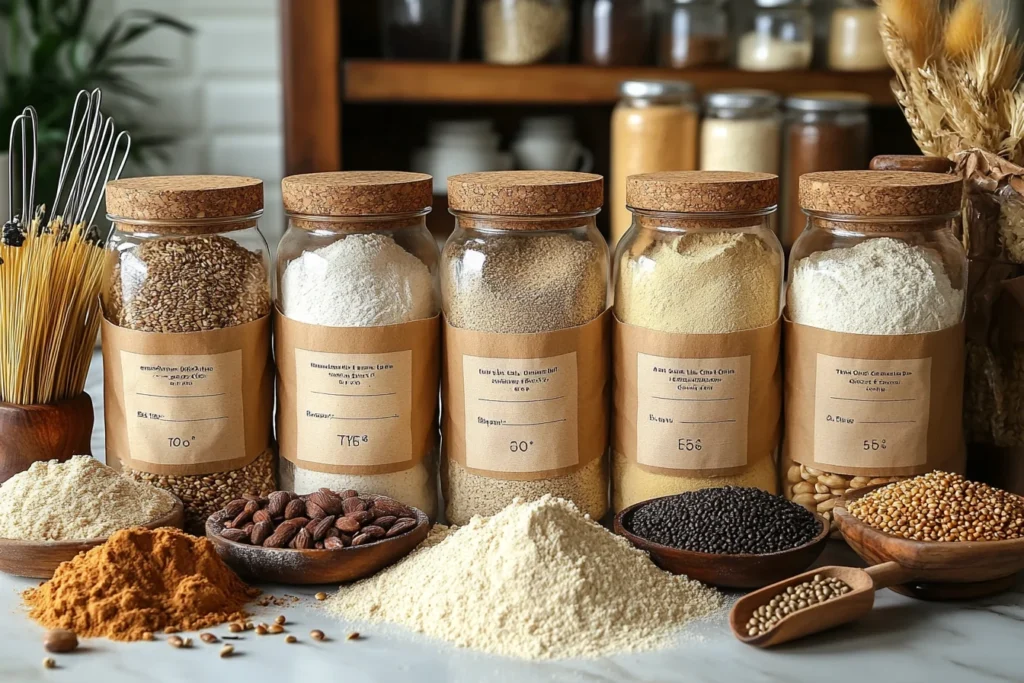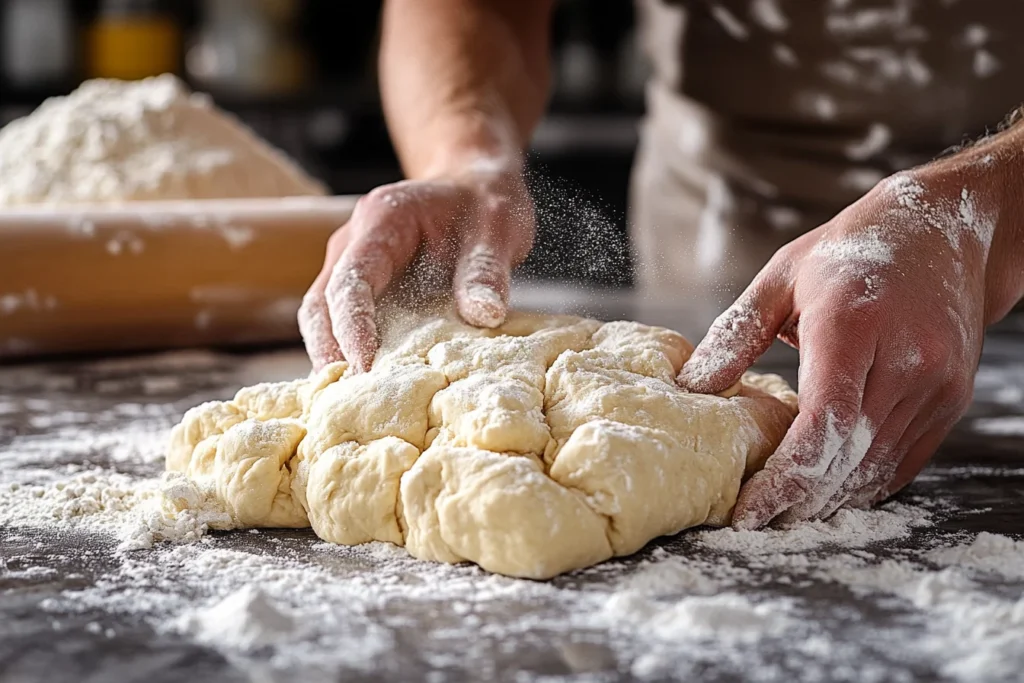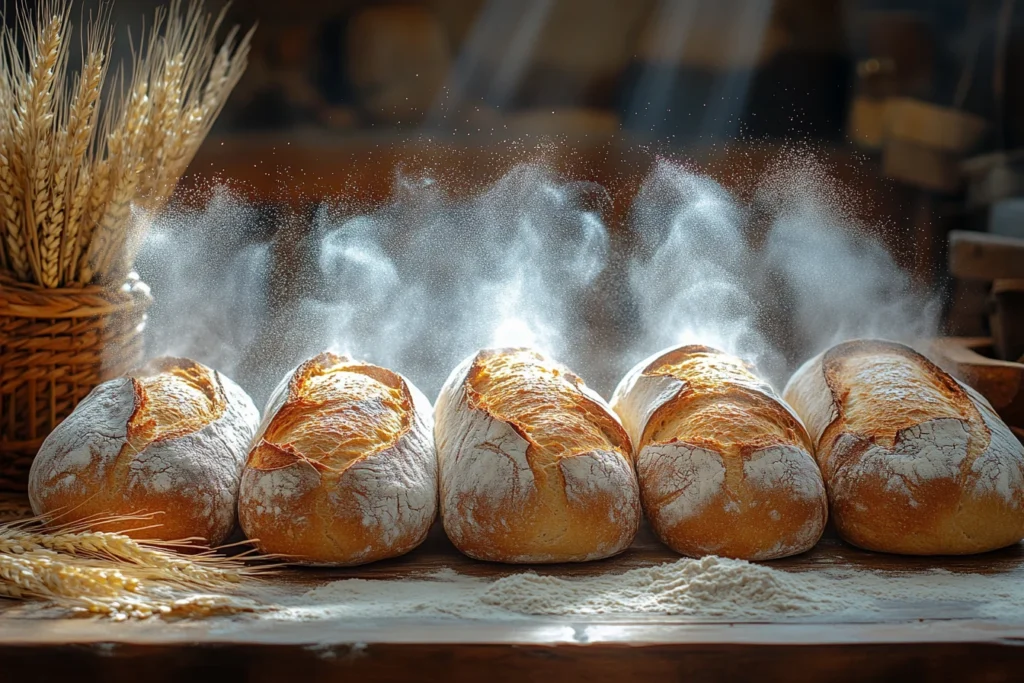What Makes European Flour Different?.European flour has been gaining interest for its particular homes, sparking interest amongst baking enthusiasts and culinary experts. Whether you’re evaluating it to American flour or exploring its numerous sorts, know-how what makes European flour unique can increase your baking game. If you’re geared up to position this know-how to work, check out our manual on Master European Flour Recipes. Looking for idea? Here’s a list of ideas in What Can I Make That Uses a Lot of Flour?. Let’s dive into the information.

Table of Contents
The Unique Composition
One of the number one distinctions in what makes European flour extraordinary lies in its composition. European flour normally carries less protein than American flour, making it ideal for delicate pastries and bread with a gentle crumb. Protein content material affects gluten development, and this distinction notably affects texture.
European flour is likewise much less processed, keeping extra natural nutrients. Unlike some American flours, European sorts regularly keep away from bleaching and chemical additives, presenting a purifier, more natural product.
Key Characteristics of European Flour:
Protein Content: Lower degrees perfect for soft, ethereal textures.
Processing Methods: Minimal, maintaining herbal taste and vitamins.
Ash Content: European policies measure ash (mineral) stages, making sure consistency and fine.
These factors no longer only affect the baking manner but also the taste and dietary price of the final product.
Types of European Flour
When exploring what makes European flour one-of-a-kind, understanding the diverse types available is critical. European flours are labeled via numbers that reflect their ash content, which represents the mineral content left after burning the flour. This numbering machine differs from the naming conventions used within the United States.
Common Types of European Flour:
Type 405 (Germany): Similar to American all-cause flour, this is a first-class, white flour best for desserts and pastries.
Type 00 (Italy): Known for its extremely-satisfactory grind, Type 00 is the gold preferred for pizza and pasta doughs.
Type fifty five (France): This is the move-to flour for baguettes and other mild, crusty breads.
European flour is frequently tailored for precise recipes, giving bakers more manage over their creations. This versatility is a huge part of what makes European flour different. It allows you to acquire precise consequences, whether you’re crafting a croissant or a country loaf.
Regional Variations
Europe’s numerous geography performs a tremendous function in what makes European flour unique. The grains used to supply flour vary broadly relying at the place’s weather, soil, and traditions, growing awesome characteristics within the very last product.
Regional Highlights:
France: Known for its soft wheat, French flour is best for creating ethereal, crusty bread like baguettes. Type 65, with a higher ash content, is frequently used for rustic, artisanal loaves.
Italy: Italian flour is prized for its first-rate grind, making it vital for pasta and Neapolitan pizza dough.
Germany: German flours are flexible, with options like Type 1050 for hearty rye breads or Type 405 for cakes.
Nordic Countries: Whole grain flours, such as spelt and rye, dominate in Northern Europe, aligning with traditional bread recipes.
Milling Techniques
The manner flour is milled performs a big role in what makes European flour exceptional. European milling strategies are steeped in subculture at the same time as incorporating modern precision to make sure steady exceptional. Unlike a few huge-scale operations, European turbines prioritize preserving the herbal essence of the grain.
Why Milling Matters:
Stone Grinding: Many European generators still use stone grinding, which retains the wheat’s germ and bran for a greater flavorful and nutritious product.
Ash Content Measurement: The ash content material in European flour reflects its mineral ranges, making an allowance for unique classifications like Type 405 or Type fifty five.
Custom Blending: European mills regularly blend different wheat sorts to acquire precise traits for bread, pastries, or pasta.
These strategies awareness on extracting the first-class from the grain without over-processing. The end result? Flour that’s flavorful, wholesome, and best for numerous baking desires.
Nutritional Benefits
Another factor in what makes European flour exceptional is its nutritional value. European guidelines emphasize herbal processing and minimum components, making sure the flour retains its inherent vitamins. This attention to excellent makes it a more healthy option for each casual bakers and specialists.
Key Nutritional Highlights:
Whole Grain Options: European flour includes a extensive sort of complete grain flours, together with rye, spelt, and emmer, which can be wealthy in fiber and minerals.
Less Bleaching: Unlike many American flours, European flour skips chemical bleaching, preserving extra nutrients and antioxidants.
Balanced Gluten Content: The slight gluten tiers make it less complicated to digest for a few individuals, specially in historically fermented bread.
These benefits are a part of the motive European bread and pastries frequently experience lighter and more pleasurable. When you take into account vitamins, it’s clean to peer what makes European flour exceptional.
Baking Characteristics
Finally, what makes European flour one of a kind turns into clear when you revel in its overall performance in baking. Bakers often rave about its texture, hydration houses, and ability to bring out wealthy flavors in dough. European flour is particularly designed to satisfy the particular needs of conventional recipes.
Baking Benefits of European Flour:
Lower Protein Content: Creates a gentle crumb for pastries, desserts, and sensitive bread.
Absorption Rates: European flour tends to soak up water differently, giving dough a silkier texture.
Consistency: European flour continues strict requirements, making sure reliable consequences each time.
From French baguettes to Italian pizza crusts, European flour offers textures and flavors that are tough to replicate with other sorts of flour. Understanding its baking traits is crucial to mastering recipes that depend on its specific qualities.
Farming Practices
Farming is at the coronary heart of what makes European flour unique. European farmers take a holistic approach to developing wheat, that specialize in sustainability, lifestyle, and quality. These practices make certain the grains are well-proper for milling into exquisite flour.
Key Farming Techniques:
Crop Rotation: European farms prioritize crop rotation to maintain soil fitness and decrease the need for synthetic fertilizers.
Heritage Wheat Varieties: Many areas develop heirloom grains like spelt, emmer, and einkorn, prized for his or her wealthy taste and nutritional price.
Organic Farming: Organic practices are extra not unusual in Europe, emphasizing herbal pest manipulate and minimal chemical use.
By prioritizing conventional and sustainable farming techniques, European farmers produce wheat that’s now not most effective better for the surroundings but also advanced in flavor and excellent. This connection to the land is a large part of what makes European flour different.

Cultural Importance
Flour is extra than an element in Europe it’s a symbol of history and culture. The cultural position of flour and bread helps define what makes European flour exclusive, as it is deeply woven into the material of daily life throughout the continent.
Flour in European Culture:
Bread as a Staple: From French baguettes to Italian ciabatta, bread holds a unique location in European diets, frequently made clean every day.
Artisan Craftsmanship: Baking is taken into consideration an artwork, with many areas boasting recipes handed down through generations.
Celebrations and Festivals: Flour-based totally items like panettone, croissants, and strudel are staples of holidays and cultural occasions.
This cultural reverence guarantees that European flour manufacturing prioritizes first-rate and authenticity. It’s a supply of delight and identity, shaping the way groups bake and share their traditions.
Environmental Factors
Europe’s numerous geography and climate make contributions drastically to what makes European flour unique. The natural surroundings directly affects the types of wheat grown, their flavor, and their suitability for particular baked items.
Environmental Influences:
Diverse Climates: From the Mediterranean’s sunny fields to the cooler Nordic areas, Europe’s climates aid a extensive range of wheat varieties.
Soil Quality: Fertile soils rich in minerals help produce wheat with precise characteristics depending at the area.
Sustainability Standards: European agricultural policies regularly emphasize green practices, making sure minimal environmental impact.
These factors now not handiest form the first-rate of European flour however also replicate a dedication to environmental stewardship. By the use of regionally grown wheat, European turbines lessen transportation emissions, making their flour an eco-conscious choice.
Comparison with Other Regions
The variations between European flour and flour from different regions come all the way down to farming practices, milling strategies, and supposed uses. These elements affect no longer just the flavor and texture but additionally the general baking experience.
European Flour vs. North American Flour
When comparing European and North American flour, one essential distinction is the protein content material. North American flour, in particular in the U.S., often has better protein stages, making it better for chewy, dense bread like bagels. However, this better protein content material isn’t best for sensitive pastries or tender, ethereal bread.
Key Differences:
Additives: North American flours frequently consist of bleaching marketers and bromates to improve shelf existence, at the same time as European flour is minimally processed.
Gluten Content: American flour has higher gluten power, that is brilliant for structure but can make dough more difficult to work with.
Flour Classification: While Europe makes use of ash content material for type (e.G., Type 55), North American flour is labeled with the aid of its motive (all-purpose, bread flour, cake flour).
European Flour vs. Asian Flour
Asian flour, typically used for recipes like steamed buns and noodles, contrasts with European flour in terms of texture and protein degrees. Asian flours are frequently made from softer wheat, that’s nearer in protein content material to European pastry flour. However, their software is adapted for particular dishes.
Key Differences:
Softness: Asian flours are milled to create notably tender and fine textures for clean, delicate baked items.
Application: Asian flours excel in noodle-making and steamed buns, at the same time as European flours are versatile across bread, pastries, and pizza doughs.
Processing Methods: Both areas recognition on preserving the essence of the grain, however European flours are often less specialized.
European Flour vs. Middle Eastern Flour
In the Middle East, flour is frequently used for flatbreads like pita and lavash. The flour here is often higher in extraction rate, meaning more of the whole grain is retained, similar to certain whole grain European flours like spelt or rye.
Key Differences:
Extraction Rate: Middle Eastern flours are frequently less refined, which is good for flatbreads however might not yield the identical effects for pastries.
Regional Grains: The Middle East is predicated closely on durum wheat, used for semolina flour, that’s less commonplace in Europe outside of pasta manufacturing.
Hydration Levels: Middle Eastern flours regularly handle higher hydration stages properly, ideal for stretchy flatbread doughs.
Global Takeaway
What makes European flour distinctive becomes clear whilst you bear in mind its versatility and consistency. While different regions specialize in precise types of baking, European flour gives a broader variety of programs, supported through strict milling standards and various wheat varieties.

Misconceptions About European Flour
When discussing what makes European flour specific, some misconceptions frequently rise up. One common perception is that European flour is gluten-free or inherently higher for those with gluten sensitivity. In fact, European flour nonetheless consists of gluten, although its lower protein content and conventional processing strategies can also make it less difficult to digest for some.
Another misconception is that European flour is universally natural. While Europe has stricter guidelines on additives and processing, no longer all European flours are organically produced. Look for licensed organic labels to affirm.
People also assume that all European flours are interchangeable. In reality, distinctive countries use distinct classifications, like Type 00 in Italy or Type 55 in France, each suited to precise baking desires. Choosing the wrong type can have an effect on the final results of your recipe.
Finally, a few consider European flour usually outperforms different flours. While it excels in texture and versatility, achievement depends on matching the flour to the dish. For example, American bread flour can also better healthy sure high-gluten recipes.
Understanding these nuances helps you admire what makes European flour one of a kind without falling for myths. It’s no longer a one-length-suits-all answer however a thoughtfully crafted component for excellent baking.
FAQs About European Flour
What makes European flour exceptional from American flour?
European flour has decrease protein content material, minimal processing, and unique classifications (like Type fifty five), which make it best for soft breads and pastries.
Is European flour gluten free?
No, European flour carries gluten. However, its lower gluten electricity and traditional processing may additionally make it less complicated to digest for a few people.
Can I use European flour in American recipes?
Yes, however you can want to regulate hydration and combining instances on account that European flour absorbs water in another way.
What are commonplace sorts of European flour?
Popular sorts include French Type 55 (baguettes), Italian Type 00 (pizza and pasta), and German Type 405 (pastries). Each kind fits specific recipes.
Conclusion
Understanding what makes European flour extraordinary exhibits its distinct qualities, from conventional farming and milling techniques to its lower protein content material and numerous regional varieties. These traits make contributions to its versatility in baking, offering steady outcomes in the whole thing from crusty breads to delicate pastries.
European flour displays a commitment to first-rate, cultural historical past, and environmental care, making it a fave for bakers international. By deciding on the right type and adapting your recipes as wanted, you can experience the particular flavors and textures that European flour brings to the table.

